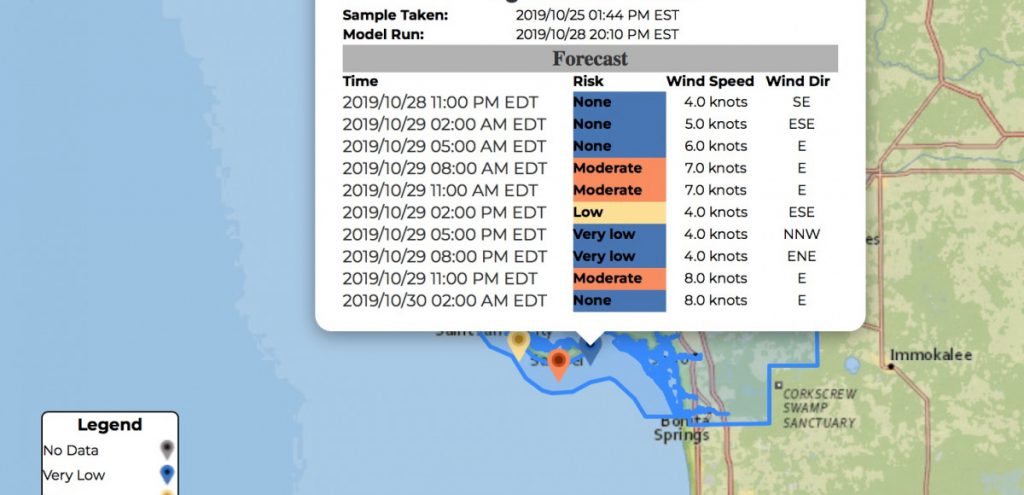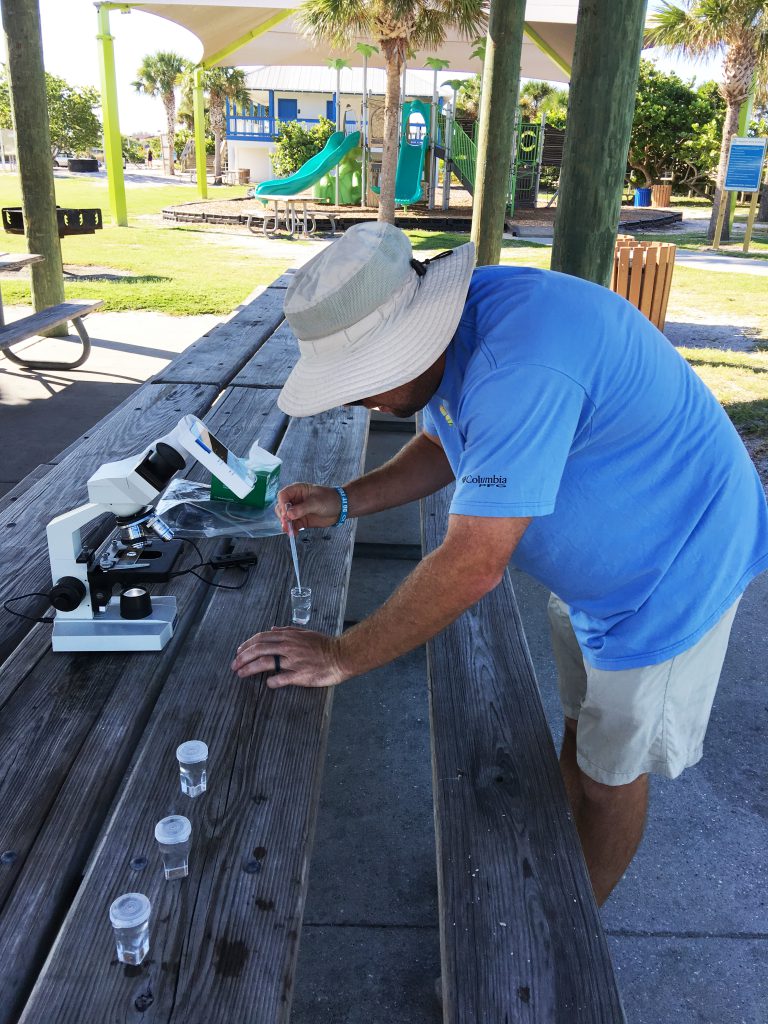
Sanibel Island residents and visitors who are susceptible to the respiratory impacts of Florida’s red tide — especially people with asthma and other chronic lung diseases — now have a new tool that will help them assess what day and time to visit three local beaches during red tides.
The Gulf of Mexico Coastal Ocean Observing System (GCOOS) website now provides a risk-level forecast for red tide respiratory impacts on Bowman’s, Lighthouse and Tarpon beaches. The 24-hour Red Tide Respiratory Forecasts are updated every three hours, following the collection and analysis of water samples, and will typically be available on Tuesdays, Thursdays, Saturdays and Sundays. This new forecast builds on NOAA’s condition reports and bulletins by providing information at a finer scale — the beach level, not just the county level.
NOAA’s National Centers for Coastal Ocean Science (NCCOS) has also launched a new satellite-monitoring product for Florida that provides satellite imagery of Florida’s coastal blooms over the last 14 days. These data are available to the public and will allow resource managers at the local and state levels to conduct targeted water sampling to better respond to bloom events.
The Red Tide Respiratory Forecast was initially implemented in Pinellas County in 2018 thanks to a grant from NASA’s Applied Science Program through the Health and Air Quality Program. It was developed by NCCOS, in partnership with GCOOS and the Florida Fish and Wildlife Conservation Commission-Fish and Wildlife Research Institute (FWC-FWRI).
Local partners helping to implement it on Sanibel include the Sanibel-Captiva Conservation Foundation (SCCF), Sanibel Sea School and the City of Sanibel. The Lee County Department of Natural Resources and Lee County Environmental Lab are also partners on the project and have been collecting samples for red tide identification that have been used in red tide forecasts and reports about public beaches since 2006.

Karenia brevis, the marine organism that causes red tide, can have negative impacts on the human respiratory system. Most people experience minor respiratory irritation — coughing, sneezing, teary eyes and an itchy throat — when red tide is present and winds are blowing onshore. Typically, these symptoms go away when they leave the beach.
But people with chronic lung problems like asthma and chronic obstructive pulmonary disease (COPD) can have more severe reactions when they breathe in airborne red tide toxins — even ending up in the emergency room. Health officials advise that these people avoid areas experiencing red tide altogether, take all medications as prescribed and have access to rescue inhalers. People with chronic lung disease should leave the beach if they begin experiencing respiratory problems, even if red tide is at very low or low concentrations.
HABscope
Key to creating the Red Tide Respiratory Forecast is a new tool, dubbed “HABscope,” a portable microscope system that uses video and artificial intelligence (AI) to quickly analyze water samples for near real-time cell counts of Karenia brevis.
To develop HABscope, researchers took a low cost, classroom-grade, portable microscope, outfitted it with a special adaptor — designed by the team’s engineer and printed on a 3D printer — then used that piece to mount an Apple iPOD touch to the eyepiece of the microscope. A portable power pack provides the power to light the microscope.
For the forecast, a researcher or citizen science volunteer first collects a water sample, places it under the microscope and uses the iPOD touch to take a video. Then, the video is uploaded GCOOS, which developed a special program that uses artificial intelligence to automatically identify Karenia brevis cells in the water sample as well as the number of cells present — the concentration of cells. The automated process reports its findings to researchers making red tide forecast models.
View the GCOOS Press Release here.
